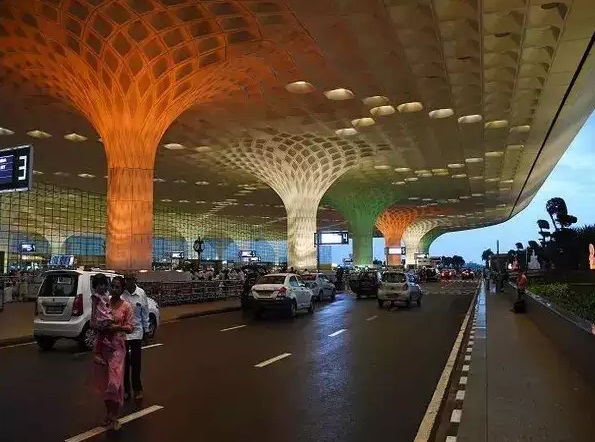Mumbai Airport: A Hub Under Pressure
Operating at near-peak capacity for years, Mumbai Airport is infamous for its challenges. While the COVID-19 pandemic provided a temporary reprieve, the return of high passenger volumes has brought back the delays. Regulatory efforts earlier this year, including a government-mandated reduction in flight numbers, marginally improved the airport’s On-Time Performance (OTP). Yet, the situation remains far from ideal.

Data from Cirium, an aviation analytics firm, paints a clear picture. On a typical Sunday, the airport handles approximately 455 departures and an equal number of arrivals, amounting to 910 scheduled air traffic movements daily. Including non-scheduled operations, this figure often nears 950, with record highs exceeding 1,000 movements in a 24-hour period. These staggering numbers strain the airport’s resources, contributing to its reputation for delays.
The Numbers Tell a Troubling Story
In October 2023, Mumbai lagged significantly in OTP compared to other metro airports. IndiGo, the country’s largest airline, achieved a 71.9% OTP across the top four metro airports, but only 55.4% of its flights were on time at Mumbai. The airport also fared poorly for carriers like Air India, Vistara, Akasa Air, and SpiceJet.
This poor performance stems from various operational constraints. Mumbai’s status as the busiest single-runway airport globally brings unique challenges. A single runway, coupled with two terminals, ongoing upgrades, maintenance activities, and parked planes occupying precious apron space, creates bottlenecks. The congestion extends to both the airside and the terminal, resulting in cascading delays throughout the day.
Operational Complexities: A Shared Responsibility
While the airport’s limitations play a significant role, airlines also contribute to the delays. Different carriers assign varied block times for flights on the same route, often leading to early arrivals during peak morning hours. This mismatch creates surges in traffic, which the airport struggles to handle efficiently. The result is a domino effect, with delays compounding as the day progresses.
Air Traffic Control (ATC), operated by the Airports Authority of India (AAI), faces its own set of challenges. Tasked with managing departures, arrivals, and aircraft movements on the ground, ATC frequently delays pushback and door closures to manage traffic flow. This coordination, essential at smaller airports with ample capacity, becomes a major pain point in Mumbai’s congested environment.

Adding to the complexity, ATC operations require highly skilled personnel. With numerous new airports opening across the country, AAI’s resources are stretched thin. Despite these hurdles, Mumbai’s ATC continues to manage one of the world’s most complex airspaces.
Hope on the Horizon: Navi Mumbai Airport
Relief for Mumbai’s overburdened airport may arrive next year with the inauguration of Navi Mumbai International Airport. Strategically located within the metropolitan region, the new airport boasts good road connectivity and is expected to alleviate the pressure on Mumbai’s primary hub.
Both airports will be operated by the same entity, enabling a coordinated approach to flight distribution. By shifting some operations to Navi Mumbai, authorities aim to improve OTP at the existing airport while maintaining the city’s overall capacity. This dual-airport system could provide the balance needed to enhance passenger experience and streamline operations.
Challenges Ahead: Fog Season and More
As winter approaches, fog-related disruptions in northern India, especially at Delhi Airport, are expected to ripple across the aviation network. With Mumbai already grappling with delays, simultaneous challenges at the two busiest airports could spell chaos for both airlines and passengers. The need for proactive measures has never been more urgent.
Enhancing the Passenger Experience
Despite its OTP issues, Mumbai Airport performs well in other areas. According to Adani Enterprises’ investor presentation, the airport exceeds benchmarks in immigration processing, check-in, and security queue times. However, OTP remains a glaring gap in its performance metrics.
To address this, collaboration between the airport and airlines is crucial. Airlines must standardise block times and coordinate schedules to reduce traffic surges. Meanwhile, the airport must prioritise operational efficiency, leveraging technology and infrastructure improvements to minimise delays.
A Path Forward
Mumbai’s role as a critical aviation hub for India underscores the importance of resolving its delay issues. With the imminent launch of Navi Mumbai Airport, there is hope for a more balanced and efficient system. However, the current challenges demand immediate attention to ensure that passengers can travel without excessive delays. By adopting a proactive and collaborative approach, Mumbai Airport can reclaim its reputation as a world-class gateway to India.

